
이더리움 vs. 솔라나: 완벽한 비교
블록체인 기술 세계에서 가장 잘 알려진 두 가지 이름은 이더리움과 솔라나입니다. 이 두 가지는 모두 투자자들을 끌어들이기 위한 장점을 가진 암호화폐 생태계이며, 동시에 성장하는 경쟁도 있습니다. 그렇다면 이더리움과 솔라나 네트워크는 서로 어떻게 다를까요? 이 가이드에서는 종합적인 분석을 통해 이 질문에 대한 깊이 있는 답변을 제공하겠습니다.
이더리움 (ETH)이란?
이더리움은 2015년에 다수의 탈중앙화 애플리케이션을 지원하기 위해 출시되었습니다. 오늘날 이 생태계는 DeFi와 NFT 분야 모두에서 사용됩니다. 이는 스마트 계약을 사용하여 거래를 자동화하고 더 투명하게 만드는 것을 통해 지원됩니다.
이더리움 블록체인의 자산은 동일한 이름의 코인으로, 줄여서 ETH라고 하며, 거래에 대한 가스 비용을 지불하는 데 사용됩니다. 이 비용은 비싸다고 간주되었지만, 네트워크가 작업 증명(PoW) 메커니즘에서 지분 증명(PoS) 메커니즘으로 전환되면서 확장성과 전력 소비가 크게 개선되어 비용도 감소했습니다. 이러한 이유로, 그리고 높은 보안 옵션 덕분에, 이더리움 네트워크는 많은 투자를 유치하여 전체 자본화를 증가시키고 있습니다.
솔라나 (SOL)이란?
솔라나는 NFT와 dApps를 위한 또 다른 플랫폼입니다. 2017년에 다른 블록체인들(특히 이더리움)이 직면한 확장성 문제를 해결하기 위해 만들어졌습니다. 이러한 문제는 암호화폐에 대한 관심이 증가하면서 발생했으며, 네트워크 혼잡과 낮은 대역폭을 초래했습니다. 솔라나는 이러한 문제를 해결하기 위한 기술적인 방법을 활용합니다.
솔라나 네트워크의 주요 도구는 확장성을 개선하는 Proof-of-History(PoH) 메커니즘입니다. 덕분에 네트워크에서의 거래는 높은 속도로 실행되며, 솔라나 코인(SOL)으로 지급되는 수수료는 이더리움에 비해 낮습니다. 이러한 장점은 솔라나 블록체인 네트워크를 고주파수 dApps에 적합한 후보로 만듭니다.
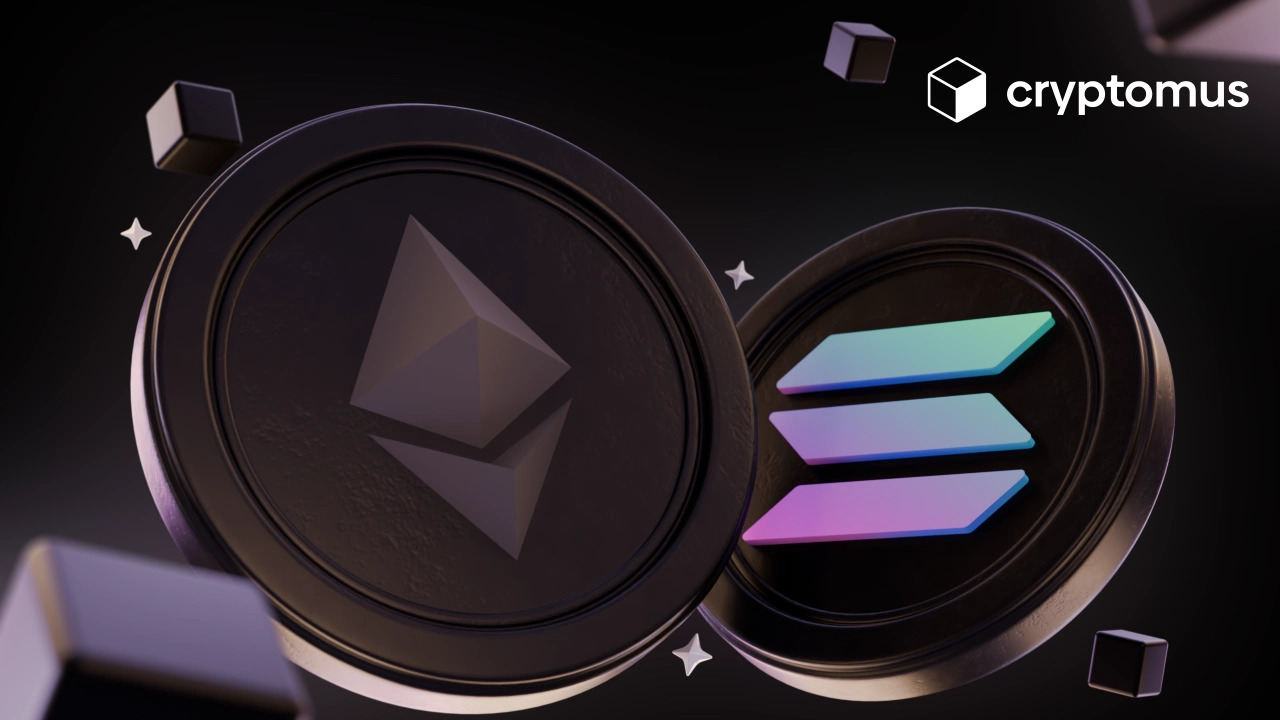
이더리움 vs. 솔라나: 주요 차이점
이더리움과 솔라나 블록체인은 연결된 애플리케이션의 수가 많아 투자자들에게 인기 있는 솔루션입니다. 동시에, 이들은 네트워크 운영 방식에 영향을 미치는 여러 차이점을 가지고 있습니다. 이를 더 자세히 살펴보겠습니다.
생태계 성숙도
두 네트워크는 그 나이에서도 차이가 있습니다: 이더리움은 솔라나보다 2년 더 오래되었습니다. 이 작은 차이에도 불구하고, 이더리움은 가장 큰 DeFi 애플리케이션(예: MakerDAO 및 Uniswap)의 주요 네트워크입니다. 가장 인기 있는 NFT 마켓플레이스도 이더리움 위에 구축되어 있습니다.
반면 솔라나는 성숙도 기준에서 이더리움에 비해 열등하며, 경쟁자와 달리 아직 초기 단계에 있습니다. 동시에, 솔라나는 적극적으로 발전하고 있으며 여러 dApps도 가지고 있습니다. 네트워크는 마케팅 전략(예: 해커톤)을 통해 점점 더 많은 개발자를 유치하여 자체적인 홍보 방법을 가지고 있습니다.
합의 메커니즘
이미 언급했듯이, 이더리움 네트워크는 PoW에서 PoS 메커니즘으로 전환했습니다. 그 이유는 두 번째 메커니즘이 거래 처리 속도가 훨씬 빠르기 때문입니다. 또한 PoS는 더 탈중앙화되고 안전하다고 간주됩니다. PoS는 더 많은 암호화폐 거래를 검증할 수 있으며, 전력 소비도 줄여줍니다.
솔라나도 PoS를 사용하며, PoH 메커니즘을 통해 거래의 타이밍을 고정합니다. 이를 통해 블록체인 검증자들이 거래 순서에 대해 적극적으로 의사소통하지 않고 합의할 수 있게 하여, 이러한 방식으로 프로세스를 가속화합니다. 솔라나는 PoS 메커니즘 덕분에 안전한 네트워크이며, PoH를 사용하여 더 빠른 작동 모드를 가지고 있습니다.
거래 속도
이것은 이더리움과 솔라나 네트워크 간의 가장 중요한 차이점 중 하나입니다. 이더리움의 업그레이드와 PoS 메커니즘으로의 전환 이후, 네트워크는 초당 20-30 거래(TPS)를 처리할 수 있게 되었습니다. 전문가들은 이 숫자가 시간이 지남에 따라 증가할 수 있다고 믿습니다.
솔라나는 이 기준에서 크게 다릅니다. 이 네트워크의 거래는 50,000 TPS 이상으로 처리됩니다. 이 능력은 솔라나 네트워크를 암호화폐 세계에서 가장 빠른 블록체인 네트워크 중 하나로 만듭니다.
이더리움과 솔라나의 거래 속도 차이는 네트워크의 우선순위가 다르기 때문입니다: 첫 번째는 탈중앙화를 우선시하는 반면, 솔라나는 높은 대역폭 제공에 더 중점을 둡니다.
수수료
특정 블록체인에서 거래를 수행하기 전에, 수수료를 확인해야 합니다. 솔라나는 높은 대역폭과 속도 덕분에 이더리움보다 유리합니다. 예를 들어, 이더리움 네트워크의 평균 가스 수수료는 약 2 gwei로, 약 0.17달러에 해당합니다. 솔라나에서의 수수료는 거래당 0.0001 SOL, 즉 0.01달러에 불과합니다.
이더리움 네트워크의 블록 시간은 13초이며, 블록의 크기는 70개의 거래입니다. 솔라나는 0.4초의 블록 시간과 20,000개의 거래 크기를 가지고 있습니다.
이더리움 vs. 솔라나: 사용 사례
이더리움과 솔라나 네트워크는 DeFi, NFT, Web3 게임 분야에서 활발히 사용됩니다. 동시에, 각 블록체인은 이 공간에서 다르게 작동합니다. 두 블록체인의 사용 사례를 더 자세히 살펴보겠습니다.
DeFi (탈중앙화 금융).
-
이더리움: 플랫폼은 중개자 없이 암호화 자산을 대출하거나 교환하거나 받을 수 있도록 도와줍니다. 대출 프로토콜(Aave)과 탈중앙화 교환 프로토콜(Uniswap)이 이에 도움을 줍니다.
-
솔라나: 마진 거래(Mango Markets), 자동 시장 메이커(Raydium) 등의 프로젝트가 이 네트워크에 끌립니다. 이더리움 네트워크와의 차이점은 비용이 낮지만 보안 위험이 더 크다는 것입니다.
NFT (대체 불가능 토큰).
-
이더리움: 이더리움 기반의 NFT 마켓(예: OpenSea)은 주로 디지털 아트 및 컬렉션 판매와 관련이 있습니다. 여기서 많은 프로젝트는 큰 거래량을 특징으로 합니다.
-
솔라나: 솔라나 기반의 NFT 프로젝트(예: Okay Bears)도 높은 거래량을 달성하며, 일부 기간 동안 이더리움과 동등해집니다.
Web3 게임.
-
이더리움: 이 분야에서 Axie Infinity 게임은 ETH 코인이 게임 내 자산으로 사용되는 돈을 벌기 위한 게임 모델을 대중화한 것으로 알려져 있습니다. 그러나 게임 분야에서 이 네트워크는 높은 수수료와 확장성 문제로 인해 거의 중단되었습니다.
-
솔라나: 솔라나의 게임은 높은 속도와 낮은 수수료 덕분에 원활하고 접근 가능합니다. 예를 들어, Star Atlas는 블록체인 내에서 그래픽적으로 풍부한 게임 환경을 제공합니다.
이더리움 vs. 솔라나: 직접 비교
이제 이더리움과 솔라나 블록체인 간의 주요 차이점과 사용 사례를 알게 되었습니다. 한 네트워크를 선택하기 위한 결정을 쉽게 하기 위해 각 네트워크의 다른 세부 사항을 연구할 것을 제안합니다.
편의를 위해 모든 정보를 아래 표에 정리했습니다.
| 암호화폐 | 코인 발행 | 메커니즘 | 목표 | 가격 | 속도 | 확장성 | |
|---|---|---|---|---|---|---|---|
| 이더리움 (ETH) | 코인 발행최대 발행 한도 없음 | 메커니즘지분 증명 (PoS) | 목표높은 보안을 갖춘 dApps를 위한 신뢰할 수 있는 탈중앙화 플랫폼 | 가격약 $2,326.03 | 속도13초 내에 확인 | 확장성20-30 TPS | |
| 솔라나 (SOL) | 코인 발행최대 발행 한도 없음, 초기 574로 제한 | 메커니즘지분 증명 (PoS) 및 Proof-of-History (PoH) | 목표더 높은 속도와 낮은 비용으로 플랫폼의 개선된 버전 | 가격약 $166.29 | 속도0.4초 내에 확인 | 확장성50,000 TPS |
이더리움 vs. 솔라나: 어떤 것을 구매해야 할까요?
이더리움과 솔라나 네트워크는 플랫폼 개발과 잠재적 수익 측면에서 매우 유망합니다. 예를 들어, 이더리움은 암호화폐 시장에서 높은 거래량을 자랑하며, 더 널리 퍼져 있고 더 안전합니다. 동시에, 느린 거래 처리 속도와 높은 수수료는 블록체인의 주요 문제입니다.
반면 솔라나는 원래부터 높은 대역폭에 중점을 두었기 때문에 이를 자랑합니다. 여기서의 수수료는 이더리움보다 훨씬 낮습니다. 그러나 이 네트워크는 아직 성숙하지 않았으며, 이 사실은 완전한 탈중앙화와 보안에 대한 의문을 제기합니다. 그럼에도 불구하고 솔라나의 성과와 이더리움이 직면한 문제들에 대한 실질적인 해결책은 장기적으로 리드를 잡을 기회를 제공합니다.
작업할 블록체인과 투자할 코인을 선택할 때는 오직 자신의 우선순위와 선호도에 집중하세요. 또한, 암호화폐 시장을 모니터링하여 가장 성공적인 투자 시기를 선택하세요. 추가로, 최신 뉴스에 항상 업데이트되고 암호화폐를 효율적으로 사용하는 방법을 배우기 위해 Cryptomus 블로그를 읽어보세요. 여기서 많은 유용한 가이드와 기사를 찾을 수 있습니다.
글 평가하기
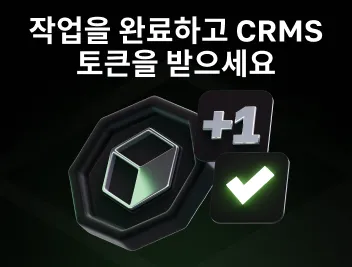
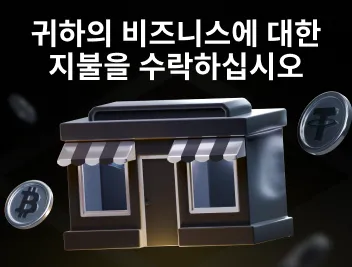
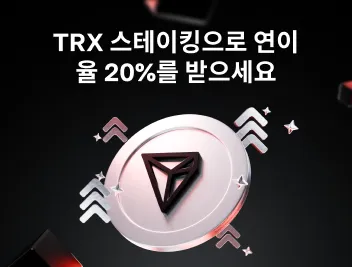
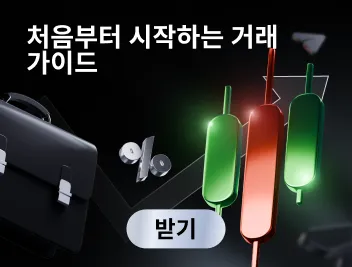
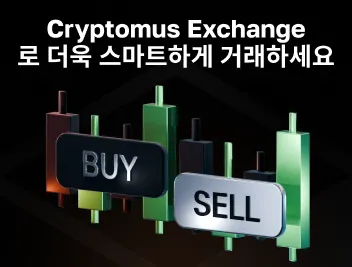



댓글
0
댓글을 게시하려면 로그인해야 합니다